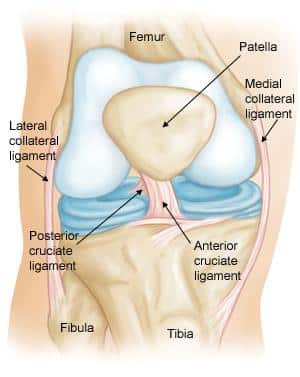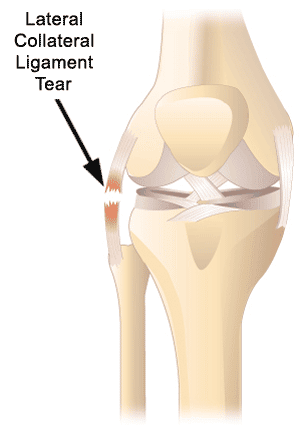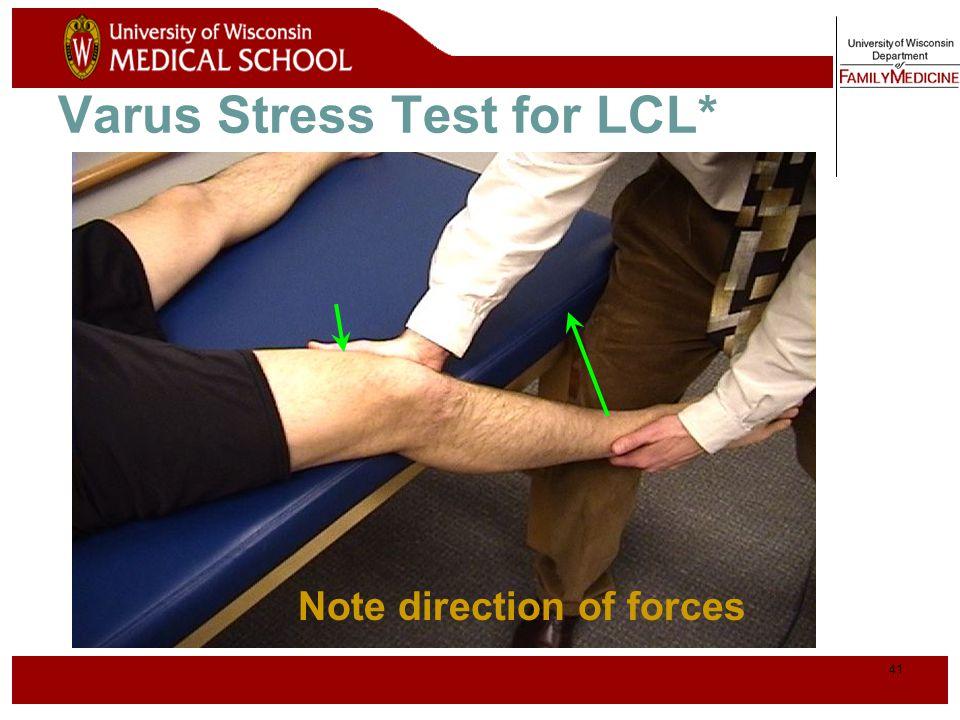The lateral collateral ligament (LCL) is a ligament located on the outer side of the knee and connects the femur (thigh bone) to the fibula (shin bone). The purpose of the LCL is to help keep the knee joint stable, especially on the outside. Injuries to the LCL range a sprain (grade I), partially rupture (grade II) to complete rupture of the ligament (grade III). This injury accounts for 7-16% of all knee ligament injuries.
Lateral Collateral Ligament (LCL) Injury

What is Lateral Collateral Ligament (LCL) injury?

What Causes It
The role of the LCL is to help stabilise the knee. When a high-level rotational force or varus stress is applied to the knee, it can result in a strain or rupture of the ligament. This often happens when the foot is locked to the ground and the knee is in an extended position. The injury can also result from a direct blow to the inside of the knee. This is usually seen in sports that involve a lot of quick changes in direction, such as in soccer, basketball, skiing and football, or in violent collisions. In most cases, this injury is associated with tears of other surrounding ligaments such as the ACL and PCL.
Symptoms Of LCL Injury
The severity of the symptoms mainly depends on the extent of the injury. Mild injuries to the LCL may have minimal symptoms. However, for severe injuries such as a partial and complete tear of the ligament, the symptoms include:
- Pain, warmth, and/or swelling on the outside of the knee.
- Knee locking caused by the stiffness of the knee joint or knee deformity.
- Unstable knee joint that may cause a feeling of the knee giving away.

Diagnosis
A physiotherapist will perform a thorough physical examination to determine which structures around the knee have been injured. They will carry out specific tests to measure the range of motion and stability in the ligaments. One of these tests is known as the varus stress test.
In addition to this, your doctor or physiotherapist may recommend further imaging like an MRI or x-ray to determine the extent of the injury e.g. Partial vs complete tear. Imaging will also indicate whether any other structures have been damaged, and if any injury to the bone has occurred.
Treatment
The treatment of the LCL injury usually depends on the severity of the injury. For mild ligament injuries, treatment may include:
- Applying ice to the knee.
- Splinting/ knee brace.
- Limiting physical activity that may strain the knee until the swelling and pain have reduced.
- Specific exercises that help regain the knee range of motion and strengthen the surrounding muscles.
- Proprioceptive retraining.
For more severe LCL injuries, surgery may be considered to repair or reconstruct the ligament.
Prevention
Prevention of an injury to the LCL could be difficult as it often results from sporting accidents or traumatic incidents like a motor vehicle accident. However, there are measures that people can use to minimise the risk of injuring the lateral collateral ligament, including:
- Following sports safety guidelines for adults and children.
- Regular stretching.
- Strengthening the leg muscles that help stabilise the knee joint.
Getting Better
If treated conservatively (without surgery), athletes can expect to return to sport after 6-8 weeks of rehabilitation. However, if surgery is recommended, the expected return to sport timeframe will be longer.

New Client Offer - 10% OFF
Are you in pain? Not sure if we can help you?
Book your initial appointment and receive 10% off any service!